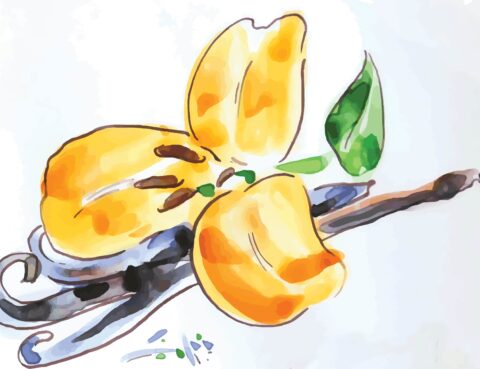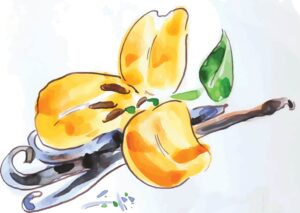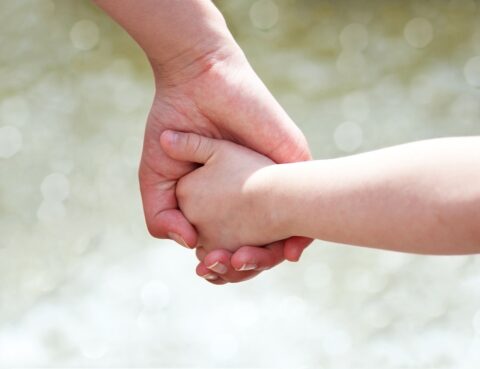
We are sad to announce the death of Gail Eleanor Carney, senior Faculty member and key administrator of the Neufeld Institute. Gail died peacefully in her sleep on December 15, 2015 after a long battle with metastatic breast cancer.
In the words of Greek orator Pericles, “What you leave behind is not what is engraved in stone monuments, but what is woven into the lives of others.”
As we collectively grieve this immense loss, we will be sharing personal stories and anecdotes about Gail written by her Neufeld colleagues, students, and friends whose lives she has touched. We will kick off this series by sharing Dr. Gordon Neufeld’s personal tribute to Gail, written upon her 2015 appointment to faculty emeritus and delivered to facilitators at the 2015 conference.
 Gail holds a very special place in my heart, in the writing of the book [Hold On to Your Kids], and in the development of the Neufeld Institute. She came into my life in the 1990s — attending some of the courses and day seminars that I was giving at that time. Once you meet Gail, you do not forget her. Even when I hardly knew her, she was impressive. The more I got to know her, the more I have come to deeply admire and respect her.
Gail holds a very special place in my heart, in the writing of the book [Hold On to Your Kids], and in the development of the Neufeld Institute. She came into my life in the 1990s — attending some of the courses and day seminars that I was giving at that time. Once you meet Gail, you do not forget her. Even when I hardly knew her, she was impressive. The more I got to know her, the more I have come to deeply admire and respect her.
Because of the sharpness of her intellect, the breadth of her knowledge, her ability to critique, and her critical thinking, I asked her to be part of the focus group for the writing of Hold On to Your Kids. She helped to guide the shape of the book.
I was delighted that she accepted my invitation to internship and was among the first to receive a faculty appointment. Her retirement from Emily Carr University was a godsend for us, as we became the beneficiaries of her administrative experience, her fierce intellect, her demanding expectations, and her incredible devotion. In 2009, she took on the directorship of our newly formed Directed Studies program and has been the main driving force behind our facilitator training program ever since. She has been a one-woman wonder when it comes to scouting and recruitment. Most of you [our facilitators] will be here because of Gail.
If you don’t already know this, I would like to share with you how remarkable this woman is. She is an artist with the mind of a scientist. Without any formal education in psychology, she has surpassed my professional colleagues as a scholar. She knows the field so well, she alone knows where I begin and where I end as a theorist — what are my contributions and who I am building on.
Gail gained my utmost respect as I witnessed her in her first battle with cancer — many years ago now. She invited me to be part of that process — and for that I am ever grateful and deeply honoured. She never shrinks from battle or from difficult challenges – she has often been my go-to person when I am not sure how to proceed with issues of the Neufeld Institute.
I have come to depend upon Gail as a friend, a confidante, as an advisor, and a source of inspiration. I have come to depend upon her fierce independent intellect for giving me an angle I had not yet considered. I have come to depend upon her mastery of the paradigm to provide me with critiques for my work.
Editor’s Note: A scholarship fund has been established in Gail’s memory. For more tributes to Gail, links to some of her art and her writings, and information about the Gail Eleanor Carney Scholarship Fund, please visit our Gail Remembered page.

This is the final installment of Dr. Deborah MacNamara’s three-part series on the sensitive (‘orchid’) child. The first installment painted a picture of the sensitive (‘orchid’) child. The second installment focused on common challenges of raising sensitive kids.
How can we give sensitive kids the best environment to grow in?
While all children need developmentally friendly environments to grow in, it is a critical factor in determining whether a sensitive child will thrive or wither. The following strategies will help create healthy contexts and relationships benefiting all children but in particular sensitive ones.
1. Protect them from experiences that are too much.
When environments, relationships, or experiences are too much for a sensitive child, their caretakers need to read the situation and protect them accordingly. For example, a parent may sign a young child up for a music class, only to find they run for the door each time the noise starts. The child may find visual or auditory stimuli overwhelming and as a result, need to spend shorter times in these environments, if at all. It is important that an adult read what a child is capable of, even in small doses, but not shelter them altogether. Pushing them beyond their limits typically leads to the child shutting down or exploding with upset. At the same time, a parent may need to take a sensitive child through a situation that feels uncomfortable for them. For example, one mother said:
My seven-year-old daughter had pyjama day at school and she put them on, only to get to the car and tell me she didn’t feel comfortable and wanted to change. I believed she would be fine once she got to school and that it was important for her to see she could do this, so I decided to help her feel uncomfortable and help her through it. I told her we were going to try wearing our pyjamas and if it didn’t work I would bring her clothes to school. She huddled against me the whole time until her teacher appeared in a pink fuzzy bathrobe and yelled, “Pyjama day!” As she looked at her classmates dressed similarly with their stuffed animals, she relaxed and went into the classroom. This may seem trivial to other parents but for me it was such a great success.
There are times to protect a sensitive child and times when they need support to face things that feel too big or uncomfortable. Knowing what to do can be difficult and requires a parent to make a judgment call through reading the child’s needs, making sense of what is stirring them up, and taking a strong lead through it.
2. Lead the child into vulnerable territory.
Sensitive children are known for their avoidance of content that is upsetting or alarming. They may shy away from sad stories in books and get scared watching children’s TV shows. Parents need to walk gently in these directions when needed, not pushing but inviting them to express what is going on emotionally. Sensitive kids often deflect attention away from their feelings because of the vulnerability experienced. It may be better to draw attention to emotional issues one step removed as in picture books or in stories about other people. Being able to play when they are stirred up will help their emotions be expressed in their art, movement, buildings, or figures. Acknowledging their big feelings, helping them express and name them will help guide them in understanding their internal world better. Reading the child’s cues and trying to draw out their upset before they erupt is a better strategy than waiting for things to go over the top. For example, one father said:
I noticed my nine-year-old son was really chewing and biting his nails as he watched Gilligan’s Island – the comedy TV show about all the people trapped on the island. I asked him what was wrong as he seemed to be kind of nervous biting his fingers. He said, “Dad, do these people ever get off the island?” He is always thinking about stuff like this, always anticipating what will happen.
Leading a sensitive child in matters of the heart is one of the most challenging tasks of all, but is absolutely critical for their overall emotional health and maturity.
3. Bridge all separation and problem behaviour.
When you need to have a discussion with a sensitive child about their behaviour, it is best to do it outside of the incident, in the context of a warm relationship, and to touch the issue gently. When things happen to upset them, they may need a cooling off period to reduce the intensity of their experience. When you convey what didn’t work, make sure to communicate the relationship is still okay. Make it easy for them to hear your words of guidance and keep your relationship strong. In the heat of their big reactions you can simply tell them, “This behaviour isn’t okay but I will talk to you later about it and we will find a way through.” They may tell you, “I don’t want to talk about it,” to which you can respond that you will make it easy, quick, and as pain-free as possible, but sometimes things need to be said and dealt with.
4. Help them find their tears when needed.
 To cultivate resiliency, a sensitive child will need to have their tears about the things they cannot change and do not go their way. Sensitive children often have big expectations and plans that are not realized. They may want good experiences to continue indefinitely, to be perfect and avoid failure, or to change someone’s mind when they don’t agree. The things they can’t change will frustrate them and sometimes lead to big eruptions, especially in the early years. When the intensity of these emotions is drained through their eruptions, melting their frustration into tears is the way through. In these soft, vulnerable tears are the seeds of resiliency in realizing they can survive when life doesn’t go their way. In order to help them find their tears they will need strong, caring adults who are not afraid of their big feelings and reactions. If their tears disappear, a host of behaviour and learning challenges can appear. Restoring emotional vulnerability is the best avenue for bringing a sensitive child to rest again.
To cultivate resiliency, a sensitive child will need to have their tears about the things they cannot change and do not go their way. Sensitive children often have big expectations and plans that are not realized. They may want good experiences to continue indefinitely, to be perfect and avoid failure, or to change someone’s mind when they don’t agree. The things they can’t change will frustrate them and sometimes lead to big eruptions, especially in the early years. When the intensity of these emotions is drained through their eruptions, melting their frustration into tears is the way through. In these soft, vulnerable tears are the seeds of resiliency in realizing they can survive when life doesn’t go their way. In order to help them find their tears they will need strong, caring adults who are not afraid of their big feelings and reactions. If their tears disappear, a host of behaviour and learning challenges can appear. Restoring emotional vulnerability is the best avenue for bringing a sensitive child to rest again.
While every child is born with differences in their inherent makeup, the reassuring answer is adults in their life are key in creating the conditions for growth. The needs of sensitive children shed light on the importance of adult relationships and our emotional vulnerability as human beings. If we can make sense of sensitive kids, we can help them flourish and express the wonderful potentials that exist inside of them. As caretakers of our children we have the power within us to alter the trajectory of their development.

This is the second installment of Dr. Deborah MacNamara’s three-part series on the sensitive (‘orchid’) child. The first installment painted a picture of the sensitive (‘orchid’) child. The term ‘orchid child’ is based on language that has been traditionally used in some parenting literature, used here as a descriptive metaphor with care that it not become a label.
What are the challenges commonly faced when raising sensitive kids?
 There are a number of challenges with raising sensitive children, given they are so receptive to sensory information. They are significantly different than their easygoing counterparts and require special attention by caretakers. Parents of sensitive children tell me it can be difficult to have a child who appears to be so reactive in comparison to others. They often internalize their child’s behaviour, believing it is their fault, rather than making sense of how easily their child is stirred up by their environment. Parents of sensitive children have a hard time describing the differences they see in their child to other adults. Parents are often judged as being too overprotective and are likely to be misunderstood. It is fortunate for many orchid children that one or both of their parents may be sensitive too, aiding them in making sense of their child.
There are a number of challenges with raising sensitive children, given they are so receptive to sensory information. They are significantly different than their easygoing counterparts and require special attention by caretakers. Parents of sensitive children tell me it can be difficult to have a child who appears to be so reactive in comparison to others. They often internalize their child’s behaviour, believing it is their fault, rather than making sense of how easily their child is stirred up by their environment. Parents of sensitive children have a hard time describing the differences they see in their child to other adults. Parents are often judged as being too overprotective and are likely to be misunderstood. It is fortunate for many orchid children that one or both of their parents may be sensitive too, aiding them in making sense of their child.
1. The more sensitive the child, the more easily they are stirred up.
Given the heightened receptivity of the sensitive child, it should come at no surprise they can be easily overwhelmed and over-stimulated by their environment. This is especially true in the early years when their brains are immature and more susceptible to being overloaded with sensory information. As one parent explained about her sensitive four-year-old:
Jacob loved his music teacher so much that when she had to change locations for her classes, we followed her from the sunlit classroom near our home to the dark basement music academy where she was teaching. On the first class Jacob couldn’t settle in and kept running out the door. During the second class, he became so agitated that he jumped up and down and landed on the teacher. A day later, when calm, I asked him if there was something about the new space that he didn’t like. “The lights buzz”, he explained, “I can’t hear anything because of the lights.”
Sensitive children often feel like they are too much to handle with perfect storms arising from being tired, hungry, and frustrated all at the same time. This can lead to upset and outbursts, prickly, or resistant behaviour.
Under ideal circumstances, it should take the average child five to seven years for their brain to fully integrate sensory information with increasing speed and efficiency. Once brain integration is achieved, the child should start to show signs of impulse control, tempering in their emotional responses, and an appreciation for context. Sensitive children may need more time for brain development by up to one to two years, depending on their sensitivity levels and environment.[i]
This potential delay in brain development has implications for schooling, as impulse control and tempered emotional responses arrive later in comparison to their dandelion counterparts. While they can be intellectually robust at the age of six, their behaviour may seem immature with outbursts, upset, and a lack of self-control still present. Given a sensitive child’s enhanced receptivity to external stimuli, the prefrontal areas of their brain need more time to form neural pathways to handle the additional sensory information. In the meantime, they are at greater risk of being diagnosed with attention or behavioural problems instead of the late bloomers they actually are.
2. The more sensitive the child, the more easily overwhelmed by experience.
One of the common mistakes made with sensitive children is giving them more sensory information than they can handle because of their natural brightness. More is not better for an orchid child and it is likely to trigger defenses to shut out sensory information. They don’t need to be exposed to more stimulation, rather; they need more time and space to process it. Opportunities to play are some of the best ways to provide this space for young children as well as creative solitude as they age. The old adage, “a little goes a long way,” is best kept in mind when considering their needs.
Sensitive children can become overwhelmed by emotional material as well. Feelings are vulnerable territory for most people but more so for the orchid child. Emotional experiences involving fear, caring, enjoyment, frustration, guilt, shame, loneliness, and rejection can lead to heightened responses. In young, sensitive children, separation can be particularly challenging with big outbursts ensuing. Temper tantrums can take on a life of their own – intense and lengthy as frustration and aggression explode out of them. At the same time, their strong desires and caring set them up for tremendous disappointment. They often imagine far more than they can actualize and become easily frustrated by their human imperfections. Their feelings can be big, overwhelming, and out of control – this is why they need strong caretakers who can help them move through these storms.
With time, patience, and support from adults around them, sensitive kids can form a relationship with their big internal world. They need names for their emotions as well as room to express them. These are the prerequisite steps before they can develop self-control over their internal world. Until then, their adults have to be responsible for ensuring their tears still flow and they have a soft place to land when the world feels too much.
3. The more sensitive the child, the greater the need for strong, caring, adult attachments.
A strong attachment to a caring adult provides rest and reprieve in a world that feels too much. The challenge is sensitive kids can feel as though they are too much to handle, too big in their responses, and overwhelm their caretakers. It is critical for adults to convey that they can take care of them, handle their behaviour and emotions, and ensure separation isn’t used as a consequence or punishment.
Sensitive children need strong alpha, caring adults to tether themselves to for the purpose of security and leadership. Adults may have to work harder to gain their trust as they are perceptive and can read false presentations well. There must a generous invitation for relationship characterized by warmth, enjoyment, and delight. Adults need to invite the child to depend on them, orient them to their environment, and introduce them to people who will care for them such as teachers, coaches, dentists, or doctors. What a sensitive child needs most of all is an adult who can read their needs and seize the lead in caring for them.
Continued… in next week’s final installment of this series on the sensitive child, Deborah will provide insight into how can we give sensitive children the best environment to grow in.
[i] Neufeld, G. (2013). Level I Intensive: Making Sense of Kids. Neufeld Institute Vancouver, BC, Canada. www.neufeldinstitute.com.

In this three-part series, Faculty member Dr. Deborah MacNamara paints a picture of the sensitive (‘orchid’) child, discusses the challenges commonly faced when raising sensitive children, and offers insight into how adults can provide the best environment for raising their sensitive kids and helping them flourish. The term ‘orchid child’ is based on language that has been traditionally used in some parenting literature, used here as a descriptive metaphor with care that it not become a label.
Approximately one in five children are more affected or stirred up by their environment and stand out in comparison to their peers. They are the kids who get more easily overwhelmed, alarmed, intense, sensitive, prickly in their responses, and passionate in temperament. According to Thomas Boyce at the University of California, these ‘orchid’ children are neurobiologically distinct and possess an enhanced receptivity to their environment based on genotypical differences. [i] They are more highly tuned into their environment, unlike ‘dandelion’ children who are less aware and are more easy going in comparison.
Sensitive kids show greater receptivity and an enhanced capacity to take in their environment through the senses. It is comparable to radio antennas that are tuned for maximum receptivity so as to avoid missing any signals. While the type and level of receptivity differs in each child, they will show heightened sensory responses in visual, auditory, touch, taste, smell, kinesthetic/proprioceptor, emotional/perceptual areas. The possible combinations are endless and each child will have a continuum of receptivity when it comes to each sense.
Orchid children may complain the tags in their clothes are too itchy, sounds are too loud, smells are too strong, or some foods taste so bad it feels it burns their tongue. They are also more likely to suffer allergies and skin problems. It can be difficult to get their attention because they are bombarded by sensory information and are overwhelmed. They also seem to possess a natural brightness in comparison because of their enhanced receptivity to information and stimulation. Adults might see them as being overly dramatic or reactive but they are only being true to the enormous world that exists inside of them.
The neurobiological differences in orchid children make them more sensitive to child rearing practices – they will either wither or thrive. [ii] When they are raised in stressful environments they are greatly impacted, unlike dandelion counterparts who fare much better. They are more likely to suffer from mental health issues, addictions, and delinquency as a result of such conditions. However, when orchid children are raised under ideal conditions with the presence of caring adults, their development can surpass their dandelion counterparts. “An orchid child becomes a flower of unusual delicacy and beauty.”[iii] Despite neurobiological differences and heightened reactivity in sensitive children, it is the relational environment they grow in that makes the difference developmentally.
Continued… part two of this article will post on our editorials next week, with Deborah MacNamara discussing the challenges commonly faced when raising sensitive children.
[i] Boyce, T. (2014). Orchid Children and the Science of Kindness. Dalai Lama Centre for Peace and Education, Vancouver, BC. https://www.youtube.com/watch?v=_mSrc0GFpJw
[ii] Ellis, B.J., Boyce, W. T. (2005). Biological sensitivity to context: Empirical explorations of an evolutionally-developmental theory. Development and Psychopathology. V. 17,(2), pp. 303-328.
[iii] Same as above.

Disney/Pixar’s animated movie, Inside Out, released on DVD and Blu-Ray throughout North America this week.
I took my daughters to see the movie while it was still playing in theaters, and am happy to share some of my insights — and delights — about this wonderful film. (And I’ll warn you right here that this review contains spoilers.)
Inside Out is set in the colorful and creative control room of a child’s brain. Right away the main character and leading emotion, Joy, orients the viewer to the child hero: Riley, a gurgling, cooing, adored newborn.
Joy is joyfully running Riley’s emotional show, storing all of Riley’s marble-like memories along “Headquarters” walls and happily sending significant ones up a chute and into long-term storage. But the control room soon gets crowded, according to Joy.
In a fabulous scene where Riley’s parents introduce their toddler to broccoli, Joy simultaneously introduces her “colleagues” (other emotions) in action—at the same time demonstrating what Dr. Gordon Neufeld refers to in his latest course, Heart Matters: The Science of Emotion, as the first law of emotion: Emotion seeks expression.
There’s Fear, who stares in wonder at the incoming broccoli on a screen that shows Riley’s perplexed perspective and asks, “Do you think it’s safe?” Next comes Disgust, who hovers over the levers with her upper lip curled, since it’s her job to keep “Riley from being poisoned, physically and socially.” Disgust makes her assessment and then her dashboard move… as Riley’s emotion is expressed in the launching of her broccoli bowl at Dad. At the threat of a no-dessert consequence, Anger moves toward expression, pounding on the dashboard with hair aflame, sparking Riley’s tantrum.
Riley’s dad responds with the airplane fork game, instantly entrancing all the emotions, and thus Riley. This one-minute scene succeeds in painting a hilarious portrait of the preschooler personality. True to development’s agenda, Riley can only register one emotion at a time. Her emotions have a certainty in their thinking. They’re short-sighted. They’re given to pendulum swings. And, best of all, they have an innocent belief in magic.
Saving her least-favourite emotion until last, Joy introduces us to Sadness. Throughout the bulk of the film, Joy works hard to keep Sadness out of the dashboard driver’s seat and far away from Riley’s memories—lest she taint them with her sad, blue touch.
Pixar opted to draw on Jaak Panskepp’s basic emotions—which simplifies the storytelling, of course, for young viewers. But it left me yearning for a broader, more accurate picture of emotions. Joy’s inherent promise to the viewer, by way of her description of a “crowded” control room, left me unsatisfied when only four more emotions came on scene. I would have loved to see the control room jammed with a wide spectrum of other emotions—dozens of them, even if only briefly—such as calmness, insecurity, resistance, timidity, boredom, to name a few. Additionally, “Frustration” would have been a more accurate name for what Pixar coined “Anger”—and would have served as a blame-free word choice, to boot. Likewise, “Alarm” would have been a more descriptive name for “Fear.” “Disgust” provided a lot of comic relief, but in reality is a survival emotion and wasn’t presented that way in the film.
Nevertheless, even sticking with five emotions and portraying them the way they did, Pixar gets high marks for showing the emotions’ work. As Dr. Neufeld says, “Emotion has work to do. It is meant to move us in ways that serve us. This is the way Nature cares for the child.” There is no doubt in the film that each of the five emotions care deeply for Riley and that despite their limitations, they are moving in her brain out of a shared motivation to serve her.
Things get interesting when Riley is 11 and her family moves from Minnesota to San Francisco. There, Riley is faced with all kinds of obstacles: broccoli “ruined!” pizza, whispering classmates, and distracted, busy parents. What’s more, Riley’s a new adolescent, and so is experiencing high levels of alarm—related to the move, and also from the loss of proximity to her parents (and imaginary friend Bing Bong) that comes with the territory of growing up. In other words, separation is incredibly intense for Riley at this time in her life.
Sadness doesn’t mean to interfere, but she can’t stop herself from approaching Riley’s memories, coloring them sad. Joy makes no room for Sadness. She tries to reason with Sadness. She focuses on Sadness’s behavior. She judges the feelings. As developmentalists could only predict, a messy situation gets messier when Joy tries to rescue Riley’s emotions from further “damage.” During an altercation, Joy and Sadness get sucked into the memory chute, forced to find their way back to Headquarters. Then the real quest begins.
“Emotion is spontaneous, but is not inevitable,” says Dr. Neufeld. “It can be dammed up. Impediments can get in the way.” Pixar throws many impediments in Joy’s way to illustrate this.
In Long-Term Memory, Joy is dismayed to see workers tossing out Riley’s memories, seemingly on a whim. But as classical psychologist Jean Piaget described, “The first futility children experience in their life is holding onto good experiences.” Joy gets this same first taste of futility, and adults get a good laugh, as phone numbers are tossed from long-term because, of course, Riley’s “got her cell phone for that.”
Meanwhile, Fear, Disgust, and Anger struggle alone at Headquarters. They’re desperate for Joy to return to the controls and run the show, as usual. They do their best to express themselves as Joy would, all emotions believing Joy is the answer. But they’re failing. The emotions clam up—what neuroscientists would describe as a pressing down on all of the emotions—resulting in a depressed Riley. Without the intended movement of emotion, Riley is no longer moved to care. She stops caring about her attachments. Her five “personality islands” that represent the things she cares about most—Goofball Island, Hockey Island, Friendship Island, Honest Island, and Family Island—begin to crumble.
Joy’s and Sadness’s journey physically takes them through Long-Term Memory Storage, Abstract Thought, and to Nature’s answer in play: Imagination Land, where Bing Bong is always ready for fun… and Riley’s imaginary boyfriend waits for his shining moment to gallantly step in. Joy and Sadness traverse through a Hollywood-like studio called Dream Productions, the Subconscious, and a wasteland of discarded memories.
But ultimately emotions Joy and Sadness must complete their emotional journeys. Through her play and through her unstuck tears, Joy comes to the realization that she can’t censor Sadness’s influence. In fact, she needs Sadness, and needs to believe in Sadness’ value. Ultimately Riley’s story is one of adaptation – she cannot adapt to her move until she is free to let go of the world she has left behind. And that’s a job for Sadness alone. Once believed in and valued, Sadness blooms in the newfound confidence that grows after she realizes how much she matters, too.
Once Joy and Sadness fulfill their heroes’ journeys, it’s all the more satisfying an ending when the rest of the emotions must mix together with Joy and Sadness in order to complete their shared mission for Riley: to save her from the adolescent temptation to flee from her alarm in this very significant rite of passage into maturity.
Just as William Blake penned, “Joy and woe are woven fine,” Joy and Sadness prove out what Dr. Neufeld says: “happiness lies on the other side of sadness that has been embraced.” When Joy and Sadness mix, sharing the control panel, Riley adapts through her tears, finding comfort in the arms of her loving, caring parents. And as she adapts to this huge change in her world and first passage into adolescence, Riley emerges as a separate person, her crumbled personality islands re-built as dozens of new islands form.
My children enjoyed the film, even though at five and six they were too young to fully grasp the film’s intricacies, meanings, and much of the humor. After we saw the film, I asked my daughters what the movie was about. They shook their heads, confused.
After a pause, though, my eldest said, “Everything was all mixed up.”
She didn’t realize what she was saying. But she was right. Even for children too young to grasp most of the film, Inside Out’s message will resonate in some way: happiness can’t own a person—or constantly drive the controls. All emotions are important and have the child’s best interests in mind. They all serve a purpose. What better message of a full picture of emotional health than that?

Spring is finally here in many parts of the world. It is a season of new growth, new possibilities, fresh hopes, and, for many species: a mating season! Nature comes alive with the sounds of mating calls, puffed-up chests, colourful plumage meant to attract a mate, hormones and pheromones floating in the air, and battles amongst males for the attentions of the female. In many ways, it is very similar to what might be observed in high school hallways!
What an incredible transition of seasons in a human life – to witness our adolescent shift into that place where their feelings begin to take on new depths and intensities of attractions, romances, and the many colours of love. It can lead to a very preoccupied child who struggles to think of anything else inside the potency of their experience! And of course, nothing is ever quite the same anymore. The world has burst open in all new ways, and naturally so.
What does this transition mean in terms of our place as parent? What changes in the parent-child relationship and what needs to remain the same? Parents can sometimes find this to be an awkward transition of having to now consider their adolescent child as a growing and maturing sexual being! Along come the negotiations around best age to allow dating, group activities versus alone time, how much alone time is appropriate for a young dating couple, how involved should the dating couple be, how involved should the adult be inside the young relationship? There are many new details to navigate, and each family will be different in terms of their culture, beliefs, philosophies, and customs around this newly emerging place in a young life.
While certain aspects of the parent-child relationship are necessarily evolving, certain aspects need to remain the same. First and foremost, our adolescent child still needs us to be active, involved, and interested in their lives. Sometimes parents will begin to back away from closeness because of the awkwardness that can be part of this relationship transition. In the face of all things changing, it becomes important to remember that our child needs a strong sense of us as an anchoring presence more than ever.
The simple act of listening without reaction or judgement will be extremely important to allow the channels of communication to remain open. Let them tell you about their ups-and-downs, crushes, worries, fears, jealousies, and hurt feelings without it leading to strong parental reaction or opinion. Sometimes our child will discuss something that reveals troubled waters from our adult perspective: perhaps concerns over a controlling relationship dynamic or worries over what we see as an inevitable heartbreak. It is so important to listen and weigh our advice carefully, if offered at all, lest our child stop talking due to fear of lecture, disapproval, or reaction. When they stop feeling they can safely share what is in their heart and mind, we risk losing our influence in their lives.
Finally, embrace this new season unfolding within your growing child. Take delight in their experience in a way that normalizes it, celebrates it, invites it, and welcomes it. Similar to our spring flowers, these budding feelings of attraction, romance, and love are very new, tender and vulnerable… our young are just learning how to deal with these emotional experiences. Our loving presence, listening space and warm involvement, even in the face of all that is changing, will help our growing children continue to take root in strong and healthy ways.

 The seasons have changed, yet again, winter has passed and summer is around the corner. The weather is unstable, as if resisting change, hesitant to move on to summer. Spring is referred to in the dictionary as to “issue forth suddenly, as water…” and “to come into being by growth, as from a seed…” I never fully gave thought to the concept of Spring, until recently. Not long ago we moved away from the hustle and bustle of city life and for the first time have a garden of our own. In our garden we planted trees and plants and together with our children watched them grow as the seasons changed. Winter arrived and we found ourselves worried about the different plants, but watched them hold strong to the winds and survive the frost, except for one particular tree. Our pomegranate tree didn’t do as well as the others. The tree lost its leaves, bent over, and looked as if it wouldn’t survive the especially cold weather this year. Unfortunately, there wasn’t much we could do to control the weather, so we waited…
The seasons have changed, yet again, winter has passed and summer is around the corner. The weather is unstable, as if resisting change, hesitant to move on to summer. Spring is referred to in the dictionary as to “issue forth suddenly, as water…” and “to come into being by growth, as from a seed…” I never fully gave thought to the concept of Spring, until recently. Not long ago we moved away from the hustle and bustle of city life and for the first time have a garden of our own. In our garden we planted trees and plants and together with our children watched them grow as the seasons changed. Winter arrived and we found ourselves worried about the different plants, but watched them hold strong to the winds and survive the frost, except for one particular tree. Our pomegranate tree didn’t do as well as the others. The tree lost its leaves, bent over, and looked as if it wouldn’t survive the especially cold weather this year. Unfortunately, there wasn’t much we could do to control the weather, so we waited…
A couple weeks ago I walked by our living room window and looked, once again, at our tree and stared in awe as I realized it had sprung to life overnight. The bare branches had turned green from top to bottom. It was stunning. It had “issued forth suddenly” and as the days turned into weeks our tree had “come into being by growth.” New branches grew, the sprouts turned into big green and red leaves, and flowers had come forth. The bare, cold, and tired tree turned into the beauty of our garden and we know that it won’t be long until it will bear fruit.
As my husband and I watched the tree come to life overnight, our gaze turned from our tree to our children. Each one of our five children have been through different phases of ‘winter’ in their lives. Periods of time when we wondered how they would manage. Periods of time when we weren’t sure WE would survive the changing of the seasons in their lives. As much as we want to control the different aspects of their lives and ours, there is much we have no control over. All we can do is love them and support them the best we can, provide warmth and safety, a place to rest and wait. And then growth happens, sometimes as if overnight. The ever persistent “NO” turns into “Okay Mommy, if you say so.” The resistance to homework turns into new ideas and excitement over learning something new. Worrying about others and wanting to help out takes the place of indifference and egocentrism. And so the list goes on. Caring, motivation, cooperation, excitement, resilience, hope. All are fruit that come forth as a process of growth. Our children “come into being by growth” and many times this growth springs forward after being dormant for long winter-like months.
It is normal to worry, we do so because we care. But we can have faith in nature and in the natural processes of growth. Even in the darkest of winters, we can remind ourselves that seasons change and after every winter comes spring. When spring finally arrives we’re reminded yet again how miraculous growth really is.

She’s crying again. More like a high-pitched scream. I am so exhausted! Why isn’t she?? She seems to be beyond herself now – in a frenzied state. And all I can think about is the paper I still need to write before morning. My plan was 8 pm – lights out! Then it was going to be my turn. Now it’s 10 pm and both of our alarm and frustration is going through the roof!!
I am not sure what bedtime looks like in your house, but this was a regular scenario for us. At least it used to be, until I discovered the magic in my voice.
It started one night very much like the one mentioned above – I held my daughter in the rocking chair as she hyperventilated between sobs, and contemplated my options. In desperation, I decided to call a friend. Not long into our conversation, I noticed that something miraculous had happened… my daughter was fast asleep! Mission accomplished! But how? What was the secret ingredient? Pixie dust? Perhaps a natural gas leak? Or could it possibly have been the sound of my voice in quiet conversation? (Note that this was a much calmer tone than in the hours before when it was loaded with frustration: “That’s it!! I’m closing the door. No more water. No more stories. GO TO SLEEP NOW!!!”)
That must be it! The magic was in my voice! It made sense really. I am not sure why I never noticed it before. The songs I would sing to calm her down. The way I gently whispered “breathe” when alarm took over and stole her breath away. Now I had something I could work with – a way to help her feel close when she faced the unbearable separation of night time.
 And so began what was to be for years to come a treasured ritual – a time of reading to my girls before bed. We started with the Narnia Chronicles and began a tradition of reading classics that spanned a decade and continues to this day. And while the book was usually enough to bring her to rest, sometimes I needed to sing too. (In fact, this proved to be an even stronger elixir that did not seem to require being in tune or on key!)
And so began what was to be for years to come a treasured ritual – a time of reading to my girls before bed. We started with the Narnia Chronicles and began a tradition of reading classics that spanned a decade and continues to this day. And while the book was usually enough to bring her to rest, sometimes I needed to sing too. (In fact, this proved to be an even stronger elixir that did not seem to require being in tune or on key!)
I had found my magic and it opened my eyes to what she needed from me – a way to keep close and a way to hold on when the world threatened to go dark around her, leaving her alone and separated from the ones that she loved.
I wonder how many other parents have untapped magic within them. It could be the voice, it could be the smile, it could be one’s smell – some invisible string for them to hold on to so they can hold on while drifting to sleep. In essence, the magic is something that reminds them that they are not alone, something that bridges the night and puts their eyes on the next connection.
I realize now that it wasn’t actually about the magic at all. In fact, the answer was within me the entire time – I just didn’t see it in the fog of my own exhaustion. The magical way through was about seeing what my child needed and stepping in to be the answer.




 reason knows nothing of”. Emotions are not feelings. Feelings are the names we give emotions; our subjective appraisal of what is stirred up inside of us. The process of bringing these instinctually driven, emotional experiences under conscious control of the pre-frontal cortex (where we think before we act), starts to unfold in the early years and continues well into adolescence. It is the development of integrative and executive functioning in the pre-frontal cortex that allows us to experience more than one feeling or thought at a time giving rise to more self control beginning at approximately age 6. It is part of our human nature to have a relationship and increasingly conscious awareness of our emotions, separating us from all other mammal species. The question remains – what is the role of adults in helping kids develop a more civilized expression when stirred up by their emotions?
reason knows nothing of”. Emotions are not feelings. Feelings are the names we give emotions; our subjective appraisal of what is stirred up inside of us. The process of bringing these instinctually driven, emotional experiences under conscious control of the pre-frontal cortex (where we think before we act), starts to unfold in the early years and continues well into adolescence. It is the development of integrative and executive functioning in the pre-frontal cortex that allows us to experience more than one feeling or thought at a time giving rise to more self control beginning at approximately age 6. It is part of our human nature to have a relationship and increasingly conscious awareness of our emotions, separating us from all other mammal species. The question remains – what is the role of adults in helping kids develop a more civilized expression when stirred up by their emotions? Children can sometimes resist and hide their emotions especially if they believe approval from significant others will be otherwise. The idea that ‘good girls are nice and don’t talk back’ or ‘brave boys don’t cry’ continue to infuse adult messages increasing the need to repress emotions that run contrary. If we get caught up in being nice and brave one wonders where all the not-so-nice or fearful feelings go? We also live with a false belief that the expression of an emotion will lead to increased actions based on them. Research on the other hand suggests the expression of emotions actually leads to diminishing their overall effect and need to act. When we try to cut out troublesome feelings, the upset, the frustration will need to go somewhere and the question becomes where does this energy go? When our emotional systems are activated and emotional expression blocked, the energy can become stuck and escalate thus eroding overall expression and spontaneity for life. Stuck emotions lead to disarray. Our words need to be congruent with what is within our heart. Without this integrity we pollute ourselves, living in the shadows of our authentic self.
Children can sometimes resist and hide their emotions especially if they believe approval from significant others will be otherwise. The idea that ‘good girls are nice and don’t talk back’ or ‘brave boys don’t cry’ continue to infuse adult messages increasing the need to repress emotions that run contrary. If we get caught up in being nice and brave one wonders where all the not-so-nice or fearful feelings go? We also live with a false belief that the expression of an emotion will lead to increased actions based on them. Research on the other hand suggests the expression of emotions actually leads to diminishing their overall effect and need to act. When we try to cut out troublesome feelings, the upset, the frustration will need to go somewhere and the question becomes where does this energy go? When our emotional systems are activated and emotional expression blocked, the energy can become stuck and escalate thus eroding overall expression and spontaneity for life. Stuck emotions lead to disarray. Our words need to be congruent with what is within our heart. Without this integrity we pollute ourselves, living in the shadows of our authentic self. convey we can handle their emotions. Some children experience intense emotions due to inherent sensitivity sometimes overwhelming adults in their life. For a child to share their heart’s content they need to feel we can take all of them – that they need not make themselves smaller in our presence because they are too much to handle.
convey we can handle their emotions. Some children experience intense emotions due to inherent sensitivity sometimes overwhelming adults in their life. For a child to share their heart’s content they need to feel we can take all of them – that they need not make themselves smaller in our presence because they are too much to handle.
